Car Accident Lawyers in Chicago, IL
Willens & Baez is a top-rated law firm with an award-winning team of Chicago Personal Injury Lawyers and Car Accident Attorneys who can help you when you have been injured in a car accident. Since we charge no legal fees, unless and until we succeed in obtaining a monetary recovery for you, you can count on us fighting hard to get you the compensation you need and deserve.
We know that an injury case has the potential to take over a person’s life, making it difficult to move forward. People turn to us for the dedicated, caring help they require, regardless of the type of accident they were in or the type of injury sustained. We want to help them take control of their situation so they can focus on what matters most — getting back on track. This is also why many of our firm’s cases are referred to us from other lawyers and law firms who trust us to handle their friends, family members and clients’ personal injury cases.
Why Let Willens & Baez handle your Chicago Car Accident Case?
You’re entitled to justice if a traffic accident injures you or your loved one – especially if the accident results in a death – despite your defensive driving skills. No amount of money will ever undo your suffering, however, but obtaining monetary compensation will be a big help in getting you back on your feet. Willens & Baez is ready to provide you with the effective and compassionate legal service you need to successfully claim what you deserve.
If you’ve been in a car accident in Chicago or anywhere else in the state, determining your best course of action isn’t easy without an experienced Chicago auto accident attorney. At Willens & Baez, we know how to step in and take care of the details that protect your rights and options, assuring you of the compensation you need and deserve.
Willens & Baez serves Chicago and surrounding areas. We are available 24/7. If you can’t come to us, we’ll arrange to come to you. Your consultation with us is free.
Call (312) 957-4166 For a Free Consultation
Need an Experienced Chicago Car Accident Attorney?
Now, more than ever is the time to practice safe, defensive driving in Chicago – and in all of Illinois. Why? Because the city and the state have become far more dangerous places for motor vehicle drivers and pedestrians since 2015. In 2016, 1,055 persons died in car accidents in Illinois, the second year in a row this grim statistic exceeded 1,000 deaths. Traffic accidents with more than 1,000 fatalities last occurred in 2008.
And things might not take a turn for the better in 2018 and the years ahead. That’s due to the state’s faster speed limit (70 mph from 65 mph on rural interstates instituted in 2014), more miles being driven as gas prices remain low, and because the state still has no law requiring motorcycle drivers to wear protective helmets.
The Illinois Department of Transportation (IDOT) promises renewed public safety campaigns and better-targeted traffic enforcement patrols to mitigate the spike in accident deaths. These laudable moves, however, can only go so far. When you’re out on the road these days, your safety rests increasingly in the hands of other drivers whose distracted states of mind aren’t focused on safe driving. Many more cars on the road today also increases the risk of an accident.
Your professionalism, persistence and continued support let me and my family get through this very difficult time.
– M.W. a former client
How To Handle Insurance Companies
We relieve you of worry and stress so you can focus on getting well. Your health should be your primary concern, not dealing with insurance companies and other details that can cause additional stress.
We’ve learned from hard-won experience that insurance companies aren’t on your side. As a one-time employee of a large insurance company, our firm’s founder, Matthew L. Willens, is very familiar with insurance company tactics and can thwart any effort to deny you your rightful, full and fair compensation. We know how to assign liability where it belongs.
If you’ve a lost a loved one in a fatal car accident in or around Chicago, we can help you understand your legal rights and options. Matt Willens is a compassionate, yet aggressive Chicago auto accident lawyer who will ensure that your rights are protected and that you and your family receive the full and fair compensation that you need and deserve.
An insurance company will rarely offer someone without a reputable personal injury lawyer a full and fair settlement. Keep in mind that insurance companies make billions of dollars by collecting as much as they can in premiums from ordinary people, then paying out as little as possible when claims are made. Their tactic of denying, delay, defend after an accident has been the top tactic used by insurance companies for decades to deny you rightful compensation.
At Willens & Baez, we determine your fair settlement based on key factors: past and future medical bills; rehabilitation; lost earnings; loss of earning capacity; disfigurement; pain and suffering; disability; loss of a normal life and changes in your relationships with loved ones. We determine this at the appropriate time, on our client’s timetable, not the insurance company’s.
The State Of Road Safety In Illinois
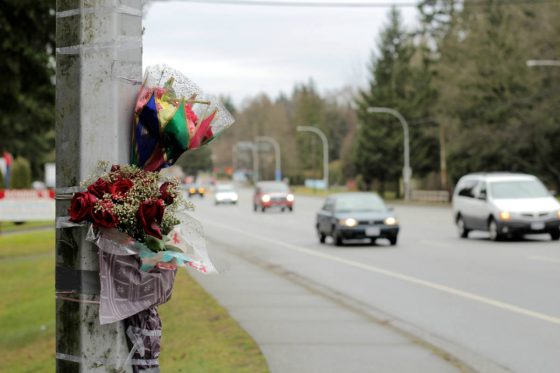
It’s to be earnestly hoped the number of traffic fatalities in the states falls below 1,000 persons this year and in the years ahead. The fact remains, however, that the speed limit remains at 70 mph and that drivers are traveling more. Then, there’s a steady increase in the number of young drivers on the road. Taken together, these three causes plus a range of others contribute to the uncertainty about safety on Illinois’ roads.
- DISTRACTED DRIVING: More than 6,000 car accidents occurred when a driver was using a mobile phone from 2009 to 2013 Learn More About Distracted Driving
- NOT USING SEATBELTS: Close to half of the people killed weren’t wearing seatbelts.
- DRIVING UNDER THE INFLUENCE: Some 25 percent of fatalities involved a drunk or impaired driver. Learn More About Driving Under the Influence
- UNLICENSED DRIVERS: These people were involved in 151 deadly car accidents in 2016.
- LONGER ROAD TRIPS: In-state drivers traveled 1.7 percent more miles in 2016 than in 2015. Low gas prices are one reason for increased driving.
Rural Interstates Are Deadly
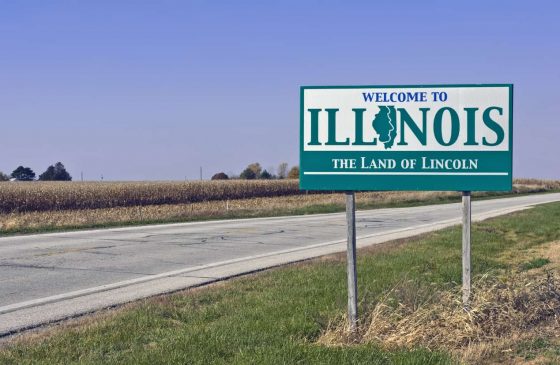
Road safety experts affirm that higher speed limits nationwide – including Illinois – are among key factors in the rise of fatal crashes. It is regrettable to learn that traffic deaths in Illinois actually fell to a record low in the first full year of higher speeds (2014) before spiking in 2015 and again in 2016. Illinois’ higher speed limit came into effect on January 1, 2014.
Research has consistently shown that adults are much more likely to survive a collision when a vehicle is traveling slower than 25 mph. The likelihood of a pedestrian or cyclist death greatly increases when the motor vehicle’s speed exceeds 25 mph.
Illinois’ Interstate Highway System is quite long. It consists of 13 main highways and 11 auxiliary highways with a combined length of 2,249 miles. The Interstate Highway with the longest section is Interstate 57 with a length of 356 miles.
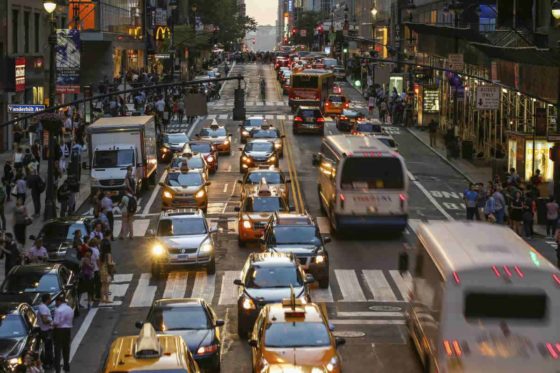
Chicago car accident lawyers know just how bad it gets out there. Chicago is prone to road accidents because of its heavy traffic and the massive rush of pedestrians within this 234-square mile city. The city’s Central Business District, which includes most parts of the Near North Side and Loop Chicago area, is particularly prone to both vehicular and pedestrian accidents.
Illinois Crash Facts Statistics identified five locations in Chicago more prone to accidents involving pedestrians, consequently, be on the alert when you get to these areas:
- Jackson St. between Clark St. & Wabash Ave.
- Michigan Ave. between Chicago Ave & Oak Street
- Dearborn St. between Ohio St. & Huron St.
- Canal St. between Jackson & Washington St.
- Columbus/Fairbanks between Water St. & Ontario St.
Around 78% of all pedestrian-related accidents took place at an intersection. In most cases, pedestrians were hit when they were trying to cross safely with the traffic light flashing green on their side.
Most Common Car Accident Injuries In Chicago
Serious injuries can result in lost wages, lost earning potential, medical bills and long-term medical treatment. The type of compensation you need to move forward may depend on the kind of personal injury suffered and its severity. Some common types of car accident injuries include:
- BACK INJURY: It’s important to seek immediate medical attention immediately after a car accident. Keep in mind that even if a doctor tells you there doesn’t seem to be anything seriously wrong, you may still have suffered a back injury. Learn More About Back Injuries
- BROKEN BONES: Broken bones or a bone fracture suffered in a car accident are not minor injuries. They will always require medical attention and a period of time to heal. Many people are unable to return to work while they recover from their injury. That’s why compensation will almost always include lost wages. Learn More About Broken Bones
- NECK INJURY: Many neck injuries present symptoms right away, while others may take days or weeks. Don’t assume you have no serious neck injury because there doesn’t seem to be anything initially wrong. If you’ve been involved in a car accident and think you’ve injured your neck, seek medical treatment. Learn More About Neck Injuries
- KNEE INJURIES: Knee injuries that result from car accidents can be serious. If you need weeks or months to recover, you will have to deal with lost wages. You might not be able to do the same work as you once did, resulting in a loss of earning capacity. Learn More About Knee Injuries
- CATASTROPHIC INJURIES: A catastrophic injury is an injury that permanently prevents an individual from performing any gainful work. These injuries often place a huge burden on the victim’s family because of their serious, long-term effects. In addition, the lifetime expense of rehabilitation and medical bills will impose a serious financial stress on a family. Learn More About Catastrophic Injuries
- WHIPLASH: Whiplash includes a range of injuries to the neck caused by or related to a sudden distortion of the neck associated with what’s called extension. In many whiplash cases, the actual extent of the physical damage sustained by a patient, particularly to their soft tissues in the cervical region, are not immediately evident following a car accident. The symptoms of minor whiplash injuries tend to dissipate over a period of time. In more serious whiplash injuries, however, victims can suffer immediate and prolonged medical problems. Learn More About Whiplash
No matter what your injury is, you should receive ALL of your benefits, not just the ones the insurance company wants to approve. Insurance companies make billions of dollars by collecting as much as they can in premiums from ordinary people, then paying out as little as possible when claims are made.
At Willens & Baez, our Chicago car accident attorneys want to help you take control of your situation so you can focus on what matters most – getting back on track.
Chicago Motor vehicle accidents
To a great extent, the type of injuries suffered by motorists and their passengers or pedestrians rests heavily on the type of accident they were involved in. How vehicles collide also bears on the resulting injuries.
Injuries to a vehicle’s occupants can be mitigated by safety features such as seat belts, airbags and crumple zones, and the weight and construction of the vehicle. But injuries – and fatalities – are more likely to occur at high speed despite safety precautions.
Head-on collisions
Often fatal, head-on collisions involve the front ends of two vehicles smashing into each other, or a single vehicle colliding with a static object such as a tree or telephone pole. The immense impact of two speeding vehicles ramming into each other will often negate any protection provided by crumple zones and seat belts. Hence, the often-fatal outcomes of these horrific collisions. On the other hand, single-car collisions might cause driver and passenger injuries, pedestrian injuries, and extensive property damage. Head-on collisions can also involve bicyclists, motorcyclists, pedestrians and other innocent bystanders, with often fatal results for these victims.Learn more about Head on Collisions
Vehicle rollover
The deadliest type of crash is a rollover in which a vehicle is flipped over onto its side or roof as a result of faulty driving or by a collision with another vehicle. Often caused by sharp turns at high speed, rollovers can cause serious injuries, including spinal cord injuries and fractured limbs. The risk of death is higher in a vehicle rollover because of its potential to break the necks of the driver and any passengers. Learn more about Vehicle Rollover Accidents
Multiple vehicle collisions
Pile-ups” or chain reaction crashes can cause numerous casualties due to the sheer number of vehicles involved. Up to 100 or more vehicles can be involved in a pile-up, which is more likely to occur on wet or iced-over roads.
Pile-ups can result in a single vehicle hit multiple times, thereby increasing the danger of injuries or death among the vehicle’s occupants. The aftermath of a multiple vehicle collision is also dangerous since crumpled vehicles smashed into or piled atop one another make escaping from these wrecks a difficult task, especially for the injured.
Pile-ups generally occur in low-visibility conditions along freeways. A direct cause is a vehicle driving too close to the vehicle in front and not adjusting to road conditions. Chain reaction crashes are the result of this unsafe type of driving. Learn More About Multiple Vehicle Collisions
Rear-end collisions or rear-ending”
This type of accident can be caused either by the car in front suddenly slowing down or braking, or by the following car accelerating more rapidly than the vehicle in front of it. In many cases, injuries to the occupants of the impacted vehicle are usually much worse. The driver of the car that rear-ends the other car is usually considered at fault.
A common and severe injury is whiplash or injuries to the neck caused by or related to a sudden distortion of the neck associated with an extension. Whiplash is an ever-present danger in rear-impact collisions, even when the crash occurs at moderate speeds. Learn More About Rear-End Collisions
Side-impact collisions or T-bone
Being broadsided occurs when the side of a vehicle is hit by the front or rear of another vehicle or a fixed object. Damage to the impacted vehicle and injuries to the vehicle’s occupants are more likely to be severe in T-bone hits.
Passengers on the side of a vehicle struck usually sustain far worse injuries than they would in a front or rear-end collision. It’s for this reason that more and more vehicles are being equipped with side airbags, and designed with crumple zones.
Negligence And The Law

Illinois requires that insurance companies provide uninsured motorist or underinsured motorist (UM/UIM) insurance. Even if the negligence of the at-fault driver is upheld, however, the ability of an injured pedestrian to obtain financial compensation will depend on the extent of the driver’s insurance coverage.
Illinois is not a “no-fault insurance” state. No lawsuit against the defendant is allowed in a no-fault state. In a no-fault state, the plaintiff’s insurance will pay the plaintiff’s claim if the injury or damage caused by the accident is below a certain limit, and there are no serious injuries.

This also means a plaintiff’s damages will be reduced by the degree of fault assigned to him or her. Any recovery is barred if the judge or jury decides the plaintiff is 51% responsible for causing his or her injuries.
If the driver causes the accident, the driver’s insurance will provide compensation. If the driver is uninsured, then UIM or no-fault coverage will compensate the pedestrian for their losses.
In Illinois, the minimum liability coverage drivers must carry amounts to a mere $20,000 per injury victim and $40,000 per accident. These sums are patently inadequate, especially when an injured victim suffers a serious injury, and more so when there are multiple victims in an accident.
A good Chicago auto accident lawyer will tell you that a workable option is to look at the liability and insurance coverage of all potential defendants, apart from the negligent driver. Among those that can be held liable are the negligent driver’s employer; the motor vehicle maker (based on defects in the vehicle involved in the accident); local governments because of unsafe roads, and a claim for UM/UIM benefits.
The negligent driver’s insurance company will always attempt to shift blame to the plaintiff to get their client off the hook. The Illinois statute of limitations (or the deadline for a lawsuit to be initiated after the accident) stipulates that a personal injury lawsuit must be filed within two years of the accident. That’s why it’s so important to contact a Chicago auto accident attorney as soon as possible if you’ve been injured.
My deepest and most heartfelt sincere thank you for all of your efforts. You went above and beyond. I cannot thank you enough for all of your help. You are always in our prayers.
– P.M. a former client
The Ever-Present Danger From Distracted Drivers And Mobile Phones
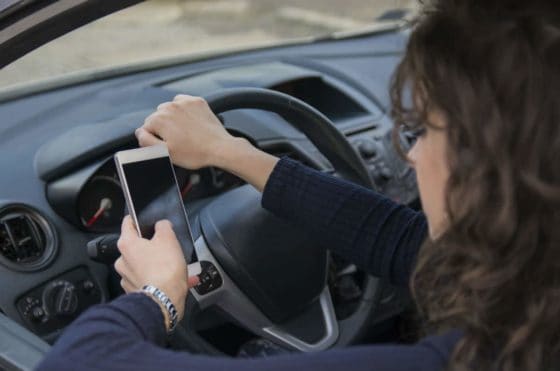
Distracted driving is lethal. NHTSA data shows that distracted driving took the lives of 3,477 persons (drivers and other victims) in the U.S. in 2015 alone. NHTSA reveals that 80% of accidents and 16% of highway deaths are the results of distracted drivers.
It’s also alarming to learn that 1.6 million, or one-fourth of all crashes annually in the U.S., are due to drivers talking on a mobile phone (also called smartphones). Another 1 million, or 18% of traffic accidents, are due to text messaging while driving.
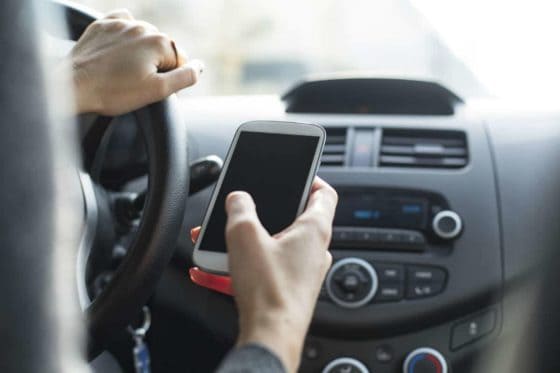
At a driving speed of 55 miles per hour, that distraction is the equivalent of driving the length of an entire football field with your eyes closed.
NHTSA stands firm in its conviction a driver can’t drive safely unless the task of driving has their full attention. Any non-driving activity – especially talking on a mobile phone or texting – is a distraction that increases a driver’s risk of crashing.
Texting while driving is the most widely reported form of distracted driving. It creates a crash risk 23 times higher than driving while not distracted. Despite the flood of information warning against distracted driving, more than 37% of U.S. drivers admit to sending or receiving text messages while driving. Another 18% admit doing so regularly.
Consequences of reckless driving

NHTSA data show the loss of 37,461 lives on U.S. roads in 2016, an increase of 5.6% from 2015. The number of vehicle miles traveled (VMT) on U.S. roads in 2016 rose by 2.2%, and resulted in a fatality rate of 1.18 deaths per 100 million VMT, up 2.6% from the previous year.
NHTSA reported a drop in fatalities resulting from distracted driving and drowsy driving. On the other hand, deaths related to other reckless behaviors – speeding, alcohol impairment and not wearing seat belts – continued to increase. Motorcyclist and pedestrian deaths accounted for more than a third of the year-to-year increase.
The toll inflicted by reckless driving behavior in 2016
- Drunk-driving deaths (10,497 fatalities) increased by 1.7%;
- Speeding-related deaths (10,111 fatalities) increased by 4.0%;
- Unbelted deaths (10,428 fatalities) increased by 4.6%;
- Motorcyclist deaths (5,286 fatalities – the largest number of motorcyclist fatalities since 2008) increased by 5.1%;
- Pedestrian deaths (5,987 fatalities – the highest number since 1990) increased by 9.0%; and
- Bicyclist deaths (840 fatalities – the highest number since 1991) increased by 1.3%;
- Distraction-related deaths (3,450 fatalities) decreased by 2.2%;
- Drowsy-driving deaths (803 fatalities) decreased by 3.5%
Teenagers are at high risk

That teenagers are inordinately fond of their mobile phones is no secret. In many cases, this fondness continues when teenagers take to the wheel. Nearly half of all American high school students age 16 and over texted or emailed while driving, reported a CDC study released in 2011. The study also revealed that teenagers who text while driving were almost two times as likely to get in a car with a driver who has been drinking. These teens are also five times as likely to drink and drive under the influence.
The results of these behaviors are tragic.
In 2013, almost one million teenage drivers between the ages of 16 and 19 were involved in motor vehicle crashes. These accidents resulted in 2,865 deaths and 383,000 injuries nationwide.
Mobile phone use (talking, texting or searching for information) was implicated as a cause for 12% of teen accidents. In more than half of the rear-end crashes involving mobile phone use, the distracted teen driver had no idea he was about to be hit. If you’ve been the victim of distracted driving, make sure to contact a Chicago car accident lawyer as soon as possible to get the help you need.
Car Accident Resources
- How to Read Your Illinois Traffic Crash Report
- Be Aware: Insurance Company Tactics
- 5 Tips To Get The Best Settlement
- What if You’re in a Hit and Run Accident
- 10 Worst Car Insurance Companies












